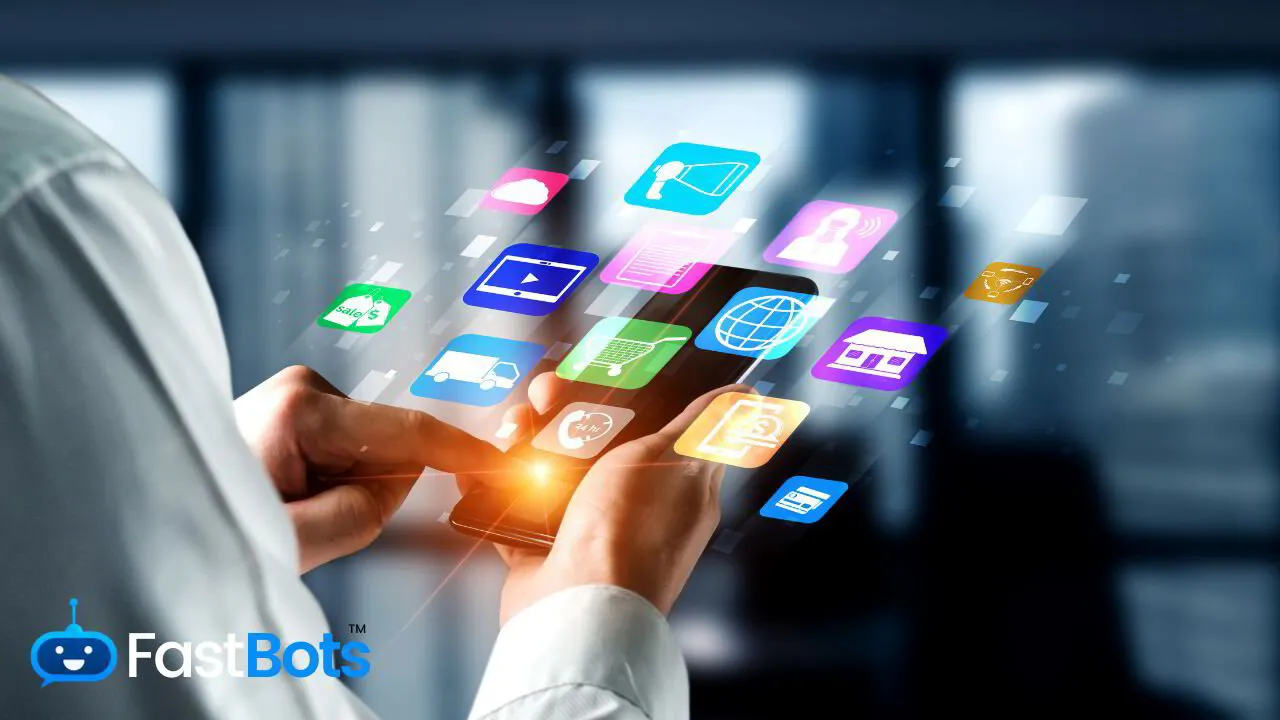In today's fast-paced world, customers expect quick and efficient service from businesses. To meet these expectations and elevate their customer service efforts, businesses are increasingly adopting multi-channel communication strategies. This approach not only enhances the customer experience but also stays ahead of customer preferences, creating seamless interactions across various platforms.
Multi-channel communication involves engaging with customers through various channels, such as voice support, web content, social media, and in-store displays. By implementing this strategy, businesses cater to a diverse range of customer preferences and habits, ensuring that they are accessible and approachable whenever and wherever their customers need them.
As the future of customer service shifts towards providing a more personalised experience, the role of multi-channel communication will continue to grow. A well-executed multi-channel strategy will not only improve customer satisfaction but also strengthen brand loyalty and drive business growth.
The Evolution of Customer Service
From Single to Multi-Channel Communication
In the past, customer service was limited to single-channel communication, primarily through phone calls and face-to-face interactions. These methods, while useful, would not cater to the fast-paced, digitally-driven world of today. As businesses grew and technology advanced, a shift towards multi-channel communication took place, providing customers with various options to reach out.
The introduction of multi-channel communication has opened doors to enhanced customer experiences. Today, your customers can contact you through various platforms, such as email, live chat, social media, and messaging apps. This has led to an increase in customer satisfaction and flexibility with communication, addressing diverse preferences.
Technological Advancements Driving Change
With rapid advancements in technology, the way businesses communicate with customers has evolved dramatically. Below are some key technological innovations that have fueled this change:
- Live chat: This communication channel allows your customers to connect with your support team in real-time through your website. It ensures quicker response times and higher levels of customer satisfaction.
- Social media: Platforms such as Facebook, Twitter, and Instagram offer various opportunities to engage with your customers, resolve their issues, and promote a sense of community.
- Mobile applications: The use of smartphones has significantly influenced communication methods. Messaging apps like WhatsApp and in-app communication have become essential tools for customer service.
- Automation and AI: Technologies such as chatbots and virtual assistants have revolutionised the way businesses interact with customers by providing quick, accurate, and round-the-clock support.
Embracing these technological advancements is essential for businesses to stay competitive and deliver seamless customer service. As a business, it's crucial to adapt to these changes and focus on providing multi-channel communication that caters to customers' evolving preferences and expectations.
Benefits of Multi-Channel Communication
Improved Customer Satisfaction
By embracing multi-channel communication, you provide your customers with a variety of options to engage with your business. This lets them choose their preferred method of communication, such as email, live chat, phone, or social media. You can also use automated responses and chatbots for quicker assistance, which improves response times dramatically. As a result, you'll see increased customer satisfaction as customers feel valued and attended to in the manner they prefer.
Greater Reach and Accessibility
Multi-channel communication allows your business to reach a wider audience and be accessible to customers through various platforms. By incorporating different channels, such as social media, SMS, mobile apps, and live chat support, you can engage with customers more effectively. This, in turn, helps to:
- Build brand awareness.
- Attract new customers
- Retain existing customers.
Here is a brief table highlighting the benefits of common communication channels:
Channel Benefit
Social Media Wide reach, real-time engagement, customer feedback
SMS Quick response, cost-effectiveness, and high open rates
Mobile Apps Easy accessibility and an integrated customer experience
Live Chat Immediate support, reduced wait times, pro-active help
Enhanced Data Analytics
Multi-channel communication allows businesses to collect valuable data from each interaction. This data provides insights into customer preferences, engagement levels, and response times, which can be used to improve customer service strategies.
A list of insights that can be gathered through multi-channel communication:
1. The most popular communication channels among customers
2. Average response times for each channel
3. Trends and patterns in customer queries
4. Customer feedback and sentiments
By implementing multi-channel communication, you can utilise these insights to optimise your customer service, address concerns, and further enhance your customers' experience with your business.
THE EASIEST WAY TO BUILD YOUR OWN AI CHATBOT
In less than 5 minutes, you could have an AI chatbot fully trained on your business data assisting your Website visitors.
Implementing a Multi-Channel Strategy
Identifying Key Channels
To establish a successful multi-channel communication strategy, you need to begin by identifying the key channels that your customers use. Customer preferences vary, and some may prefer using social media, while others rely on email, phone, or chat services. Here's a simple way to structure your channel selection:
- List down potential channels: email, phone, SMS, live chat, social media, etc.
- Analyse your audience. Use customer demographic data and previous interactions to identify commonly used channels.
- Prioritise: Rank the channels based on frequency and preference.
- Choose channels: Select the top channels, ensuring you have a mix of both digital and traditional modes of communication.
Integrating systems and processes
Once you have narrowed down your key channels, it's essential to integrate the relevant systems and processes. This consists of bringing all communication channels together under a streamlined platform that enables smooth information flow and management. There are three main factors to consider during implementation:
1. Centralised data: Ensure all customer data and interactions are stored centrally for easy access and management.
2. Coordination between channels: Efficient communication between channels ensures proper information flow and the handling of customer queries.
3. Monitor performance: Track your channel performance and analyse data continuously for better optimisation and customer engagement.
Training and support
Training your staff to efficiently handle multi-channel communication is crucial for effective customer service delivery. The following steps can guide you in preparing your team for the new strategy:
- Cross-functional training: Make sure your staff is competent in handling multiple channels and different customer service scenarios.
- Guidelines and protocols: Establish standard procedures for managing interactions, response times, and overall customer relations.
- Introduce new technologies: Continuously adopt cutting-edge tools and technologies to improve the customer experience.
- Encourage coordination. Lastly, build a culture that fosters team collaboration to ensure a seamless multi-channel customer service experience for your clients.
Challenges and Considerations
In this section, we will discuss the challenges and considerations that you need to be aware of when implementing multi-channel communication in your customer service strategy.
Maintaining Consistency Across Channels
One challenge that you may encounter when adopting multi-channel communication is maintaining a consistent message and tone across all channels. It is important to ensure that your customers receive the same quality of service, regardless of the platform they choose to interact with your business. There are a few strategies you can use to address this challenge:
- Establish guidelines: Create a set of standardised guidelines for your team to follow, covering tone, language, and etiquette on each platform.
- Train your team: Provide thorough training to your customer service representatives on how to handle each communication channel effectively and efficiently.
- Use integrated systems: Invest in a customer relationship management (CRM) system that integrates all of your communication channels, allowing your team to easily access customer information and provide a seamless experience.
Managing Increased Volume
Multi-channel communication can lead to an increased volume of inquiries, as customers are able to reach out on their most convenient platform. To manage this effectively, consider the following:
- Prioritise channels: Determine which channels are most popular among your customers, and allocate resources accordingly.
- Automate where possible. Utilise chatbots, automated email responses, and other tools to handle simple queries, freeing up your team to focus on more complex issues.
- Monitor performance: Regularly track the response times and customer satisfaction rates on each channel, making adjustments to your resource allocation if needed.
Ensuring data security
With customer interactions occurring on multiple platforms, keeping sensitive information secure is paramount. To ensure data security in multi-channel communication, you should:
- Implement strong encryption. Protect all customer data with up-to-date encryption methods, regardless of the platform it is stored on.
- Enforce access controls: Limit access to customer data on a need-to-know basis, ensuring that only authorised personnel can view and edit sensitive information.
- Update policies: Make sure your company's data protection policies reflect the complexities of multi-channel communication, and ensure that your team is aware of these policies.
Remember, as you expand your customer service channels, it is crucial to balance potential challenges with the numerous advantages that multi-channel communication can offer. By addressing these considerations, you will be better equipped to provide the exceptional level of customer service that your clients expect.

The Future Outlook
Adapting to Consumer Behaviour
As you move forward, understanding and adapting to consumer behaviour is vital to maintaining a competitive edge in customer service. The foundation of future customer service relies on multi-channel communication, allowing your business to connect with clients through various platforms. This approach not only demonstrates flexibility but also accessibility, catering to the varying preferences of your customers.
- Instant Messaging: With the growing use of chat apps and social media messaging, integrating instant messaging channels is essential. By doing so, you can promptly address customer concerns and establish a strong bond with your clients.
- Social Media: Social media platforms are now an integral part of customer service strategies. Monitor and engage with customers through various channels, such as Facebook, Twitter, and Instagram, to provide real-time support and foster customer loyalty.
- Email: Although some may consider email communication outdated, it remains a significant mode of communication. It continues to be an effective method for sending updates, promotional materials, or handling more sensitive customer inquiries.
Emerging technologies and trends
Staying ahead of emerging technologies and trends ensures your customers receive the best possible support. Here are a few technological innovations shaping the future of customer service:
1. Artificial Intelligence (AI): AI-driven chatbots and virtual assistants continue to advance, providing immediate and accurate responses to routine inquiries. Integrating AI into your customer service strategy allows your team to focus on more complex and value-driven tasks.
2. Video and Voice Support: Offering personalised video or voice support can improve the customer experience significantly. In situations where text-based communication falls short of addressing a customer's issue, these channels provide an effective alternative to real-time support.
3. Analytics and Personalisation: Harness the power of data analytics to create personalised experiences for your customers. By understanding their preferences, behaviours, and patterns, you can tailor your communication strategies, improving overall satisfaction and loyalty.
Embracing multi-channel communication strategies, adapting to consumer behaviour, and staying informed on emerging technologies will position your business for a successful future in customer service.
Frequently Asked Questions
What are the benefits of implementing multichannel customer service?
How does omnichannel support enhance the customer service experience?
What distinguishes omnichannel from multichannel customer service strategies?
Can you provide examples where multichannel customer service is effectively applied?
What is the significance of offering multiple communication channels to customers?
How does multichannel communication contribute to customer service efficiency and satisfaction?
THE EASIEST WAY TO BUILD YOUR OWN AI CHATBOT
In less than 5 minutes, you could have an AI chatbot fully trained on your business data assisting your Website visitors.


